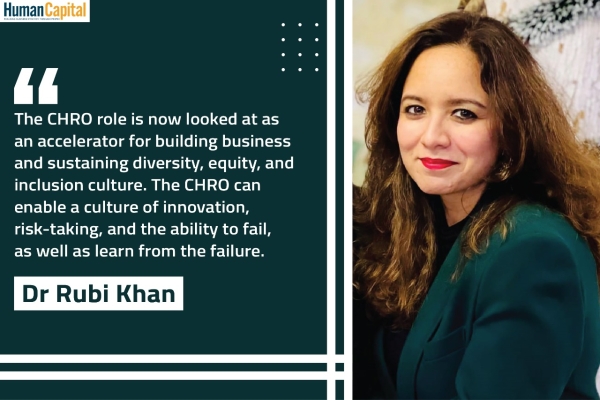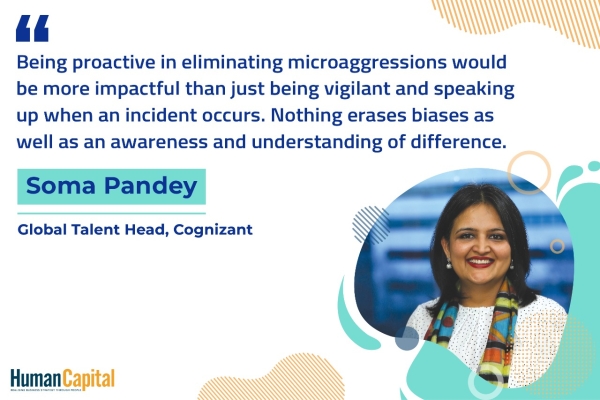It is not uncommon for an accomplished corporate professional to brandish one's dexterities at outdoor sports or indoor games and vice versa. Initiatives like CSR and a host of recreational initiatives of the organization provides them a platform to engage themselves and create a second identity at workplace affording them a second reason to belong to the workplace.
We can never overemphasize the relevance of employee engagement in these dynamic times. It has direct business impact and affects just about every vital aspect of an organization, be it the ability to attract and retain talent, create a brand presence, ensure customer satisfaction, and increase revenues, and profitability, among others. It is almost axiomatic to say employees who are connected to their organization stay longer, work smarter, and inspire others to do the same.
However, employee engagement, despite being an overused word and most researched topic in the workplace, continues to be elusive for many, particularly for a multi-generational outfit. Leaders are constantly challenged to get the engagement formula right and decrypt the mystery surrounding it.
HR leaders have overtly complicated the notion of employee engagement; we have also overlooked some of the most basic human needs and aspirations that have a bearing on employee workplace engagement.
Workplace as a Social Organism
At the most basic level, for an employee, the workplace is a battlefield where one relentlessly endeavors to establish self-worth and justify one’s place.
Along with it comes the prerequisite to belong and an urge to be accepted and endorsed by people around. An organization that has incorporated a work culture that promotes this vital need and has put in place the necessary policies, processes, and practices has already given itself a jump start to solve part of the puzzle in employee engagement.
At the next level, for most people, the workplace assumes the identity of a social organism by virtue of the interdependence of people for their survival, development, growth, and fulfillment of human needs. The values, belief system, ethos, and thought leadership at a workplace help to maintain its cohesiveness, success, and purpose.
People need love, acceptance, and opportunities to express themselves and make contributions in areas of their interest and affinity beyond work. It is natural for people to look at their workplaces as a social organism.
It is a common observation that many employees continue to be mentally engaged with their previous organizations. Such workplaces continue to benefit from these mental affiliations and engagement, as the exemployees engage in word of mouth endorsements and are always willing to provide testimony or two.
The question that leaders should try to decipher hence is how this gets created and what makes employee cherish their previous organizations. The answer perhaps lies in the symbiotic intimacy that was consciously created and fostered by providing an opportunity to build a second identity for every employee.
The Case of First and Second Identities
The first identity is your professional identity which is short and succinct. The second identity comes from your second string of talents. This identity revolves around the individual’s passion and hobbies or other creative aspirations. A genuine introspection and study of human behaviors will divulge how compelling the need is to establish this second identity for both amateur and professionals.
It is not uncommon for an accomplished corporate professional to brandish one’s dexterities at outdoor sports or indoor games and vice versa. Initiatives like CSR and a host of recreational initiatives of the organization provide them a platform to engage themselves and create a second identity at the workplace.
While we deem professional accomplishments and career advancements as the primary need, I call this as the soft need, the less articulated.
Creating lasting bonds
Today, a lot of progressive-looking workplaces promote fun at the workplace toward creating this second identity for their employees and prodding them with the second reason to be engaged with their workplace. Such efforts:
♦ Create a medium to showcase employee talents
♦ Nurture team spirit and camaraderie
♦ Strengthen employee bonding and a spirit of collaboration
♦ Celebrate togetherness and harmony
In a contemporary workplace, this second employee identity at work and the second reason to make it to the workplace creates an inseparable bond with the organization
Follow and connect with us on LinkedIn, Facebook, Instagram, Twitter for latest HR news and insights
Do you think hybrid work arrangements would be a common feature of the workplaces going forward?
Trending
-
SBI General Insurance Launches Digital Health Campaign
-
CredR Rolls Out 'Life Happens' Leave For Its Employees
-
Meesho Announces 30-Week Gender-Neutral Parental Leave Policy
-
Microsoft Unveils Tech Resilience Curriculum To Foster An Inclusive Future
-
60% Indian Professionals Looking For Job Change Due To COVID: Survey
-
SpringPeople And Siemens Collaborate For Digital Transformation Push
-
86% Professionals Believe Hybrid Work Is Essential For Work Life Balance: Report
-
Almost 1 In Every 3 People's Personal Life Affected Due To Work Stress
-
Meesho Rolls Out Reset And Recharge Policy For Employees
-
80% Of Talent Leaders & Academics Say Pandemic Changed Skill Needs For Youth: Report
-
Hero Electric Rolls Out 'Hero Care' Program For Employees
-
Human Capital In Collaboration With ASSOCHAM Hosts Virtual Conference
-
IKEA India, Tata STRIVE Collaborate To Create Employability And Entrepreneurship Opportunities
-
SAP India, Microsoft Launch Tech Skilling Program for Young Women
-
DXC Technology, NASSCOM Collaborate For Employability Skills Program
-
Lenskart To Hire Over 2000 Employees Across India By 2022
-
Mindtree Launches Learn-and-Earn Program
-
Tata AIA Extends 'Raksha Ka Teeka' To Its Employees
-
Swadesh Behera Is The New CPO Of Titan
-
NetConnect Global Plans To Recruit 5000 Tech Professionals In India
-
Hubhopper Plans To Hire 60% Of Indian Podcasters By 2022
-
Corporate India Needs More Women In Leadership Roles: Report
-
Aon to Invest $30 Million and Create 10,000 Apprenticeships by 2030
-
Tech Mahindra Launches ‘Gift a Career’ Initiative for Upskilling of Youth
-
40% Women Prefer Flexible Working Options in Post-COVID World: Survey
-
3 out of 4 companies believe they can effectively hire employees virtually: Report
-
Vodafone , CGI and NASSCOM Foundation launch digital skills platform
-
Odisha: Bank, postal employees to deliver cash for elderly, differently-abled persons
-
Skill India launches AI-based digital platform for "Skilled Workforce"
-
Hiring activity declines 6.73% in first quarter: Survey
-
70% startups impacted by COVID-19 pandemic
-
Bajaj Allianz Life ropes in Santanu Banerjee as CHRO
-
Over 70 Percent MSMEs look at cutting jobs to sustain businesses
-
93 Per Cent employees stressed about returning to office post-lockdown
-
Johnson & Johnson India announces family benefits for same gender partners
-
Indian firms turning friendly towards working mothers
-
Welspun India names Rajendra Mehta as new CHRO
-
Wipro partners with NASSCOM to launch Future Skills platform



Human Capital is niche media organisation for HR and Corporate. Our aim is to create an outstanding user experience for all our clients, readers, employers and employees through inspiring, industry-leading content pieces in the form of case studies, analysis, expert reports, authored articles and blogs. We cover topics such as talent acquisition, learning and development, diversity and inclusion, leadership, compensation, recruitment and many more.
Subscribe Now



.JPG)









































Comment